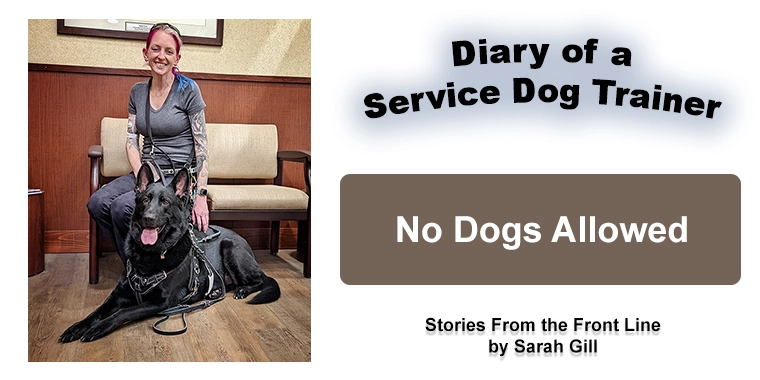
“No dogs allowed”, he said. One of the first times I took a Service Dog (SD) out in public I was by myself. My mom came to visit me at the training school and we decided to take a dog into the public to grab some food. I had a shepherd mix with me at that time, she was incredibly calm, and I placed her under the table. My mom and I continued to catch up as we waited for our server, and after about 10 minutes, I knew we would be in for a treat because management started to come to talk to us. I was not sure how this was going to go. My anxiety started to skyrocket and the “school” I attended hadn’t prepared me for what to do when that happened.
This dog was a mobility dog, we were working in and out of a wheelchair, she was retrieving items, opening, and closing cabinets, doors, fridge, pulling the chair up a short ramp, and taking the clothes out of the dryer.
The Inquisition | No Dogs Allowed
The manager started the conversation with, “no dogs allowed.”
Oh boy, here we go…
“What dog?” I ask.
“We don’t allow pets” the manager states.
“Good because she isn’t a pet, she’s a service dog.”
I didn’t mean to be so bratty, but society needs to get with it.
I’m not really sure why we stayed, the service was terrible, but I was not going to let them chase me out. Since I wasn’t prepared for that conversation, I immediately contacted the school—that was the first red flag, but that’s a story for another day. The school owner recommended threatening them by calling 911 when someone says “no dogs allowed” to a service dog, but they don’t know the [ADALinkwithAnchorText]. From that point on, I made it a point to help my clients be comfortable when challenged.
This wasn’t the first challenge by a public place questioning my dog being a service dog. But I started to realize that having a “resting bitch face” is definitely a deterrent.
If you have disabilities, take a look at the service dog tasks we have trained. A custom-trained service dog is a great starting point to more independence.
